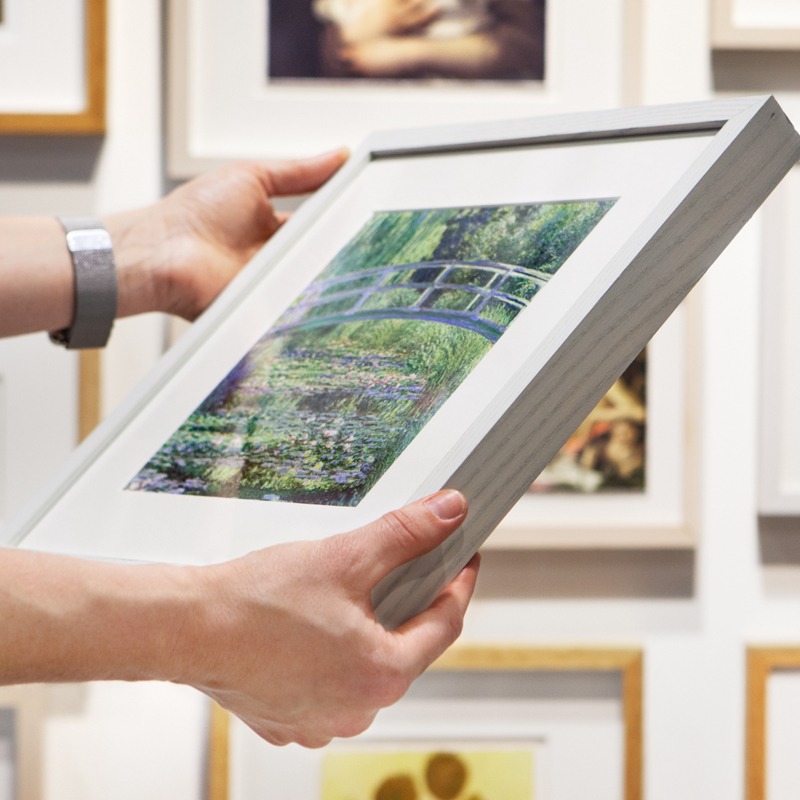Julius Schnorr von Carolsfeld, 'Ruth in Boaz's Field', 1828
About the work
Overview
The subject of this painting is taken from the Old Testament Book of Ruth. The youthful widowed Moabite Ruth is gleaning (gathering up grain left after the harvest) to support her widowed mother-in-law, Naomi. The landowner Boaz has heard of her situation, and impressed by her devotion has instructed his workers to leave lots of grain for her to gather. Ruth and Boaz eventually married, and King David, Mary, Joseph and Jesus were among their descendants.
The picture was painted in Munich, based on drawings Schnorr von Carolsfeld had made a few years earlier in Italy. He had spent ten years in Italy, and was a leading figure in a group of German and Austrian artists named the Nazarenes who sought to return modern painting to the purity of form and spiritual values that they saw in Renaissance art. The colours here are pure and clear and the painting is very highly finished, giving it a porcelain-like quality.
Key facts
Details
- Full title
- Ruth in Boaz's Field
- Artist dates
- 1794 - 1872
- Date made
- 1828
- Medium and support
- Oil on canvas
- Dimensions
- 59 × 70 cm
- Inscription summary
- Signed; Dated
- Acquisition credit
- Bought, 1997
- Inventory number
- NG6570
- Location
- Room 38
- Collection
- Main Collection
- Frame
- 19th-century French Frame
Provenance
Additional information
This painting is included in a list of works with incomplete provenance from 1933–1945; for more information see Whereabouts of paintings 1933–1945.
Text extracted from the National Gallery’s Annual Report, ‘The National Gallery Report: April 1997 – March 1998’.
Bibliography
-
1845G.K. Nagler, Neues allgemeines Knstler-Lexicon, Munich 1845
-
1944F. von Boetticher, Malerwerke des Neunzehnten Jahrhunderts, Leipzig 1944
-
1975M. Prause (ed.), Die Kataloge der Dresdner Akademie-ausstellungen 1801-1850, Berlin 1975
-
1994S. Seeliger, Julius Schnorr von Carolsfeld: Zeichnungen, Munich 1994
-
1998National Gallery, The National Gallery Report: April 1997 - March 1998, London 1998
-
1999A. Fuentes, A Guide to the Bible, Dublin 1999
-
2001
C. Baker and T. Henry, The National Gallery: Complete Illustrated Catalogue, London 2001
About this record
If you know more about this work or have spotted an error, please contact us. Please note that exhibition histories are listed from 2009 onwards. Bibliographies may not be complete; more comprehensive information is available in the National Gallery Library.

